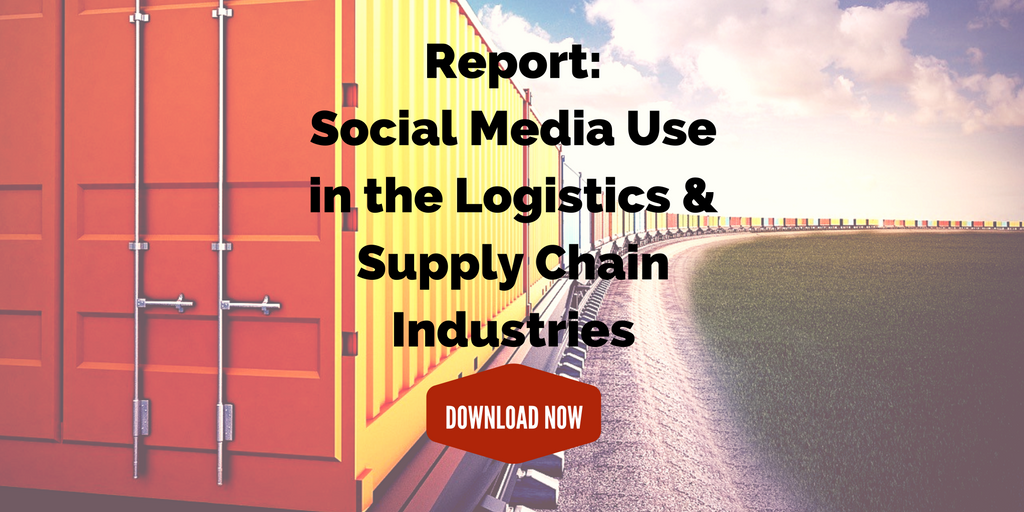
by Fronetics | Dec 14, 2016 | Blog, Content Marketing, Logistics, Marketing, Supply Chain

In 2016 88% of B2B marketers reported using content marketing to market their business, up by almost to 3% over 2015. B2B markets are increasingly using content marketing because they recognize that it an effective tool to increase brand awareness, and to attract, engage, and convert new customers. With 51% of B2B buyers relying on content research and to make B2B purchasing decisions than they did a year ago, businesses who aren’t using content marketing are missing out on opportunities that ultimately impact their bottom line.
Fronetics is a boutique marketing firm focused on the supply chain and logistics industries. We work with companies to create and execute data driven marketing strategies with the objectives of increasing brand awareness, positioning companies as thought leaders, driving meaningful engagement with prospects and customers, and helping companies to grow their business.
Every day we see the impact content marketing has on companies within the supply chain and logistics industries. One client, for example, has realized a 30% net increase in new customers since the implementation of their content marketing strategy.
We have pulled together our top 10 content marketing posts of 2016. We hope these will help you to develop and/or strengthen your content marketing strategy in the coming year.
Top 10 Content Marketing Posts of 2016
This is a guest post by Jennifer Cortez, Director, Marketing Communications, Transplace. Cortez discusses how Transplace, a North American non-asset-based provider offering manufacturers, retailers, chemical and consumer packaged goods companies the optimal blend of logistics technology and transportation management services, has used content marketing and she offers up 3 tips for creating valuable and compelling content. Read more.
We’ve pulled together 19 content marketing trends that companies within the logistics and supply chain industries should take note of. Read more.
3. How to Overcome Your Biggest Content Marketing Challenge
2016 reports produced by Content Marketing Institute and MarketingProfs, and sponsored by Brightcove outline the biggest challenges B2B and B2C companies face when implementing content marketing strategies. We discuss how you can overcome these strategies and be successful. Read more.
TotalTrax Inc., a provider of real-time vehicle, driver, and inventory tracking technologies for manufacturing and warehouse operations, worked with Fronetics to leverage content marketing to increase web traffic, generate high-quality leads, and, ultimately, grow business. Read more.
10 content marketing strategy statistics that underscore the importance of developing a clear content marketing strategy to advance your business goals. Read more.
Outsourcing content marketing can cost a fraction of what dedicating in-house resources would — and you’ll get better results. Read more.
Content marketing is one of the most effective ways to increase brand awareness, broaden your customer base, and grow your business. Yet of the 88% of B2B marketers using content marketing, only 30% feel their efforts are successful. Why do so many organizations feel they are failing? Simply put, they do not have a documented content marketing strategy in place. Read more.
Speak your boss’ language with metrics, statistics, and facts that articulate content marketing’s impact on customer acquisition and sales. Read more.
What is influencer marketing and how can supply chain companies use it to win over customers? Read more.
A blog post not only stays around longer than a print ad, it can better engage potential customers. Read more.


by Fronetics | Dec 13, 2016 | Blog, Content Marketing, Logistics, Marketing, Social Media, Supply Chain
Get the tools you need to create and implement a content marketing strategy that drives profitable customer action for your business.
Content marketing can be an incredibly effective tool for attracting customers and growing a business. But it ain’t easy. In fact, logistics and supply chain companies report creating and executing an effective content marketing strategy as one of their top challenges.
That’s why Fronetics created its Guide to Content Marketing for the Logistics & Supply Chain Industries. Newly updated to include even more helpful tips, tricks, and ideas, the guide offers step-by-step instructions for getting an effective content marketing program up and running.
If you are a DIY kind of person or are just looking to learn more about how to develop a modern-day marketing strategy for your business, this guide is a good place to start. Templates, lists, calendars, and more will walk you through the process of developing a strategy that aligns with your business goals.
Included in this guide is information regarding:
- Buyer personas
- Keyword development
- Content creation and distribution
- Social media participation
- Lead-nurturing workflows
- And more
Click the button below to download the new and improved guide and to get started creating a content marketing strategy that works for your business.

Related posts:

by Fronetics | Dec 8, 2016 | Blog, Content Marketing, Logistics, Marketing, Social Media, Strategy, Supply Chain
How 2 new developments have changed the world of marketing
The year 2017 is about to dawn, and with it marks a decade anniversary of the birth of two seismic changes in how people view the world around them. No doubt you’ve incorporated both of these changes into your daily life, but have you fully absorbed them into the way you conduct your business?
In supply chain and logistics businesses, the general answer is “no.” That’s a significant problem for a company’s long-term success, but it can be remedied.
Let’s look at the two world-changing phenomena, how rapidly they’ve reshaped the world, why they are crucial to your company, and steps you can take to fuse them into your business.
A new website is launched
It was just 10 years ago that a new website poked its head up on the internet, offering to the general public an online social network so people could keep in contact with friends and family. Originally designed as a private forum for college and high school students to connect online, but its founders thought perhaps it might catch on with the public, too.
In late 2006, when Facebook opened its website to anyone who wanted to sign on, it saw its users soar by 33%, to 8 million. But that was barely a blip compared to the social and business marketing revolution it has created worldwide. Now over 1.8 billion people use Facebook, and hundreds of millions more use other social media channels that have sprung up in its wake — Twitter, LinkedIn, Snap, Instagram, and many others.
For businesses, social media has opened up an entirely new way to find and interact with customers. It’s changed the traditional ground rules of marketing and advertising. And it’s created a completely new and sophisticated tool — big data — that provides unprecedented amounts of information about customers and potential customers. That information is valuable.
A new phone dials in
The second revolution is now literally in the hands of one quarter of the world’s population.
Around the time Facebook launched, Apple came out with its first foray into the emerging field of cellular phones. The iPhone was an instant hit, selling a little over 1 million phones in its debut year, 2007. It combined the functions of a smart cellphone with intuitive ways to connect to the internet. Rival technologies quickly followed suit. Today, an estimated 2.6 billion people worldwide use a smartphone.
Mobile communication, via smartphones, is now the dominant way that people access the internet. About 55% of people use their phones to surf the web. And while a decade ago they spent less than 30 minutes per day using their phone’s functions, now it’s around 3 hours per day. Here’s another thing to consider — most people have their cellphones on their person during all their waking hours, and they check it over 100 times a day.
For businesses, having a mobile phone strategy and a well-managed mobile presence is absolutely essential. When it’s working at full throttle, it’s populating the social media apps that people are checking dozens of times per day. It’s providing compelling content that they want to read; it’s building up name-brand recognition; and it’s growing brand loyalty.
Looking toward 2017
Every year the boundaries of social media and internet marketing get pushed. It is hard to find a consensus on what the dominant trend will be. Will Twitter dwindle and other social media platforms take its place? Some think that companies will need to be faster and smarter about creating content linked to whatever the hot topic of the day is. Others don’t see a dominate change on the horizon; instead incremental changes to what’s already online.
For supply chain and logistics companies that want to establish a foothold or build on an existing beachhead, the solutions lie in the new evolution of customer interaction, called content marketing.
The landscape changes ahead are hard to predict, but there are some reliable existing strategies to follow. Fronetics has put together a guide on how supply chain and logistics companies can formulate tactics to take advantage of the opportunities that a content marketing plan and a robust social media presence can create. Click below to download the guide.

Who knows what social innovations the next decade will spawn. If the past decade is any guide, another revolution is coming. Are you keeping pace?
Related posts:

by Fronetics | Nov 30, 2016 | Blog, Content Marketing, Logistics, Marketing, Social Media, Supply Chain
Companies within the logistics and supply chain industries are increasing customer engagement, market and business intelligence, leads, and more by participating in social media.
Results from a previous Fronetics survey tell us that 100% of responding companies in the logistics and supply chain industries consider social media a strategic tool. So how are they using these platforms, and what benefits are they getting from participating?
Below, find some highlights from that survey.
By the way, if you’re interested in how companies in these industries are using social media, take our latest survey so that we can provide you with the latest results and trends. It takes about 3 minutes, and we’ll send you the new report once it’s completed.

Social media networks popular with the supply chain
According to the survey, the most popular networks are as follows.
- Twitter (94%)
- LinkedIn (86%)
- Facebook (77%)
YouTube (50%) and Google+ (45%) are networks which are also commonly used within the supply chain and logistics industries.
Reasons for using social media
Companies reported participating in social media for the following reasons.
- Increasing the visibility of their company (95%)
- Brand image (90%)
- Establishing the company as a thought leader (86%)
- Attracting new leads and customers (82%)
Top benefits realized from social media participation
Companies reported the following benefits.
- Customer engagement: 80% of respondents reported that they agree or strongly agree that by participating in social media, their company has realized an increase in customer engagement.
- Market intelligence: 80% of respondents also reported that they agree or strongly agree that their company has realized an increase in market intelligence.
- Business intelligence: 73% responded that they agree or strongly agree that their company has realized increased business intelligence through participation in social media.
Other top benefits included increased leads and increased demand for products and services.
You can download the full report below for more information on how your industry peers are using social media. And don’t forget to participate in our new survey so that we can send you the latest information.

Related posts:

by Fronetics | Nov 28, 2016 | Blog, Content Marketing, Marketing, Social Media
Supply chain companies can use influencers in their prospects’ network as a strategic tool to gain new business.
The term “influencer marketing” often brings to mind celebrities endorsing their favorite brand of bottled water or jeans — not an image that is particularly useful for B2B businesses. However, B2B marketers should be taking this powerful trend in content marketing seriously.
While your supply chain may not benefit from an endorsement by Jennifer Aniston, you likely have brand influencers at your fingertips, which you may not even realize. Effectively leveraging these endorsements is a strategic tool for gaining new business.
Developing an influencer marketing strategy
Once you’ve identified your natural influencers, here are three important steps for building an influencer marketing strategy for your company.
1) Know your target buyer.
Rather than a scatter-shot approach, making the effort on the front end to identify your target buyer personas allows you to strategically target your customers. Understanding their needs, challenges, and purchasing structures is the key foundation to any content marketing effort, and influencer marketing is no exception.
2) Identify your industry influencers.
Industry influencers aren’t just the big names, though those people are certainly influential. It comes down to how your buyers make their purchasing decisions. The 2016 B2B Buyer’s Survey Report found that nearly half of B2B buyers use peers and colleagues as a major information resource when choosing a vendor.
Who are those peers and colleagues whom your target buyers turn to? Use every resource at your disposal to determine how they get their information. Connecting on LinkedIn, Twitter, and other social networks is a great way to do this.
3) Use the right tools for your business.
Any effective content marketing strategy depends on using the most effective tools. In a post for CMS Connected, Leah Kinthaert makes a strong pitch for Twitter. She cites the ease of plugging in a hashtag or keyword in giving you “volumes of information — from who the influencers are in that industry to what today’s breaking news is on the topic.” Furthermore, clicking on a hashtag shows you what your competition is doing as well.
The bottom line is that influencer marketing can be an extremely effective aspect of a B2B business’ content marketing strategy. Knowing your buyers, finding your influencers, and effectively leveraging this information will help boost your social credibility, as well as generating new business.
Related posts:

by Fronetics | Nov 22, 2016 | Blog, Content Marketing, Marketing, Strategy
By repurposing and thoughtfully packaging the content you have already published, you can assist your sales force in closing deals.
How many of your sales force’s calls turn into appointments? Probably very few. More and more of today’s buyers don’t want to speak with sales reps about products.
But, then, who will buyers speak to? A LinkedIn survey of 1,500 purchasers and influencers found that 86% of buyers will listen if sales professionals provide insights about their business. What’s more, 92% of buyers engage with a professional if that person is a known industry thought leader.
So, what if your sales force approached prospects not as a sales representative, but as a source of information, insight, and thought leadership? What if you already had the tools to help your sales staff achieve this reputation? If you are publishing original content, then you do.
Let them have content
Arm a sales rep with targeted content to share with prospects during specific moments in the purchase process, and it will advance his or her reputation as a source of knowledge. That can be the key to getting a foot in the door, advancing through the final stages of a purchasers’ decision, or closing the deal.
Here are four easy ideas for repurposing the content you have already created to assist your sales force.
1. Simply share.
Encourage sales representatives to follow your company and its content producers on social media and to share relevant articles with their networks. They can repost both your original content and curated articles as well.
2. Get visual.
Turn your evergreen content into easy-to-read infographics or another visual format. Send with the sales representatives to meetings with prospects, or encourage them to email the content to certain contacts as a lead-nurturing exercise.
3. Gather news.
In planning your content, you likely consider industry news, trends, and happenings. Keep a list of these points and supporting articles, and have the sales team distribute to their contacts on a regular basis, like a newsletter, to demonstrate knowledge of the business landscape.
4. Build case studies.
Develop several case studies from your company’s success stories. Organize them around specific pain points that your buyer personas face. Provide these to the sales team with a list of key points from each study to use as either talking points or to send as follow-up emails to prospects facing the same challenges.
These are a great starting point for bridging the gap between the marketing department and sales force with content. But don’t let it stop there.
Set up a role-playing exercise with your sales team, where you are the customer. Analyze their pitch and see how content can fill the holes. It’s likely you have built a lot of content around many of the reps’ talking points, which they can use to further inform their pitches and to use as lead-nurturing collateral.
Related posts:










